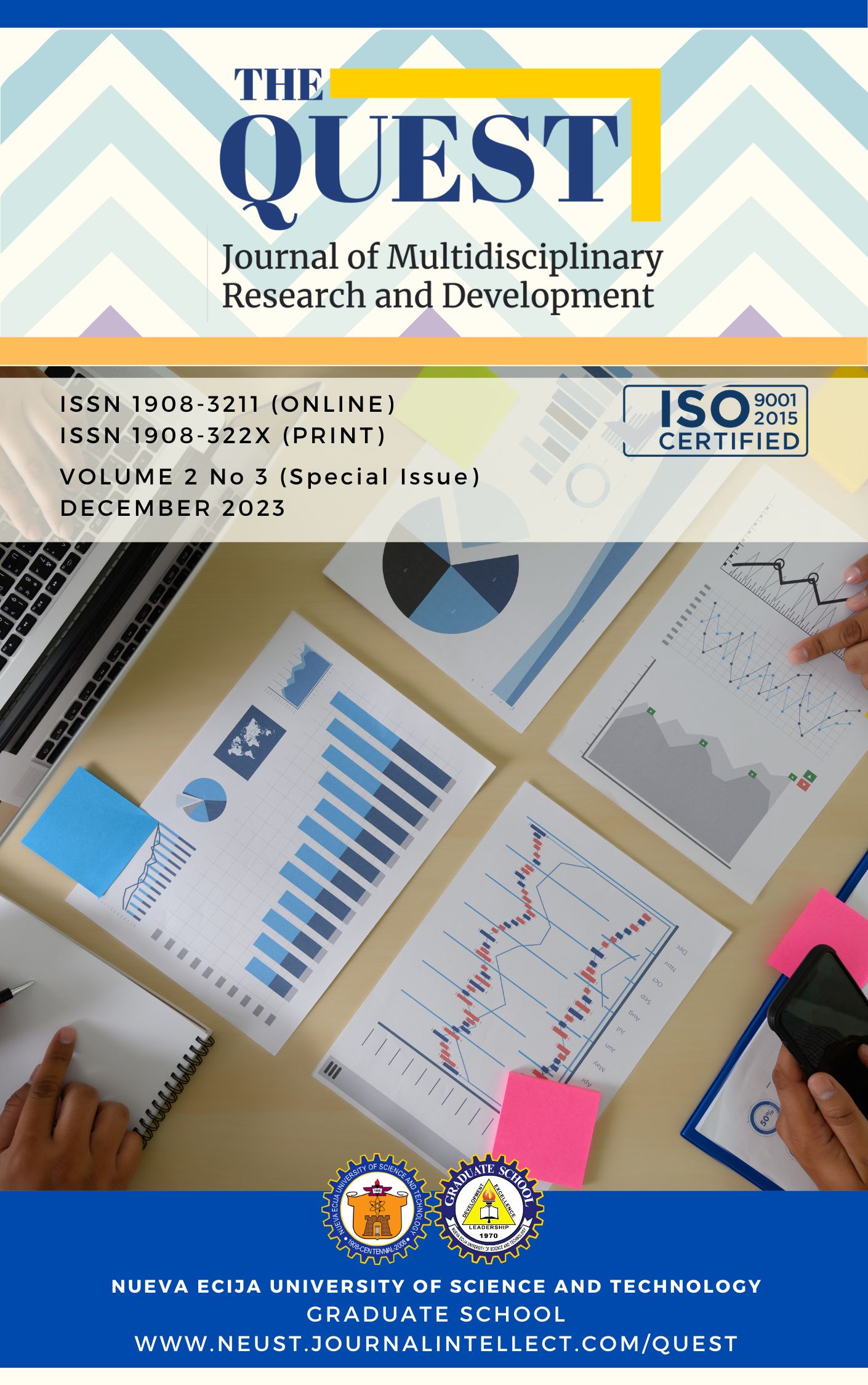Exploring Student Utilization of Google Workspace for Education using Technology Acceptance Model at Nueva Ecija University of Science and Technology Santo Domingo Off-Campus

Published 12/30/2023
Keywords
- GSuite,
- Google Workspace for Education,
- Higher Education Institutions,
- Google,
- TAM
How to Cite
Copyright (c) 2023 The QUEST: Journal of Multidisciplinary Research and Development

This work is licensed under a Creative Commons Attribution-NonCommercial 4.0 International License.
Abstract
Google Workspace for Education, formerly GSuite for Education, is the term used for cloud-based services tailored by Google to educational institutions. Many higher education institutions take advantage of its free subscription in aid of improving the teaching-learning process. While many studies have found Google tools very useful for teachers, research on the utilization and acceptance of the students towards the use of Google Workspace for Education has not been examined yet. Hence, the attempt for this research. This study utilized the Technology Acceptance Model as its framework. Using 18 four-point Likert scales, the data were collected through an online questionnaire with 175 respondents. Pearson’s Correlation was used to assess the relationship among the variables in the TAM’s framework. The results showed a strong positive correlation in the students perceived ease of use and perceived usefulness to behavioral intention to use which also correlates to its actual use. The results of the study support various colleges and universities in leveraging the integration of Google Workspace for Education due to the high level of students’ acceptance in this technological infrastructure.
References
- Ajzen, I. (1991). The theory of planned behavior. Organizational Behavior and Human Decision Processes, 50(2), 179-211.
- Al-Maroof, R. A. S., & Al-Emran, M. (2018). Students acceptance of Google Classroom: An exploratory study using the PLS-SEM approach. International Journal of Emerging Technologies in Learning (Online), 13(6), 112.
- Bandura, A. (1986). Social foundations of thought and action: A social cognitive theory. Prentice-Hall, Inc.
- Davis, F. D. (1989). Perceived usefulness, perceived ease of use, and user acceptance of information technology. MIS Quarterly, 319-340
- Davis, F. D., Bagozzi, R. P., & Warshaw, P. R. (1992). Extrinsic and intrinsic motivation to use computers in the workplace. Journal of Applied Social Psychology, 22(14), 1111-1132.
- Garcia, P. L. (2016). Enhancing student-teacher communication through Google Workspace for Education. Interactive Learning Environments, 24(6), 1302-1314.
- Google for Education. (2022). Workspace for Education Editions Overview. Retrieved July 2023, from https://edu.google.com/intl/ALL_ph/workspace-for-education/editions/overview/
- Harrison, L., & Lee, R. (2019). Exploring the role of Google Workspace for Education in shaping teaching and learning practices. Computers & Education, 128, 273-289.
- MarketSplash. (2022). Google Workspace Statistics. Retrieved July 2023, from https://marketsplash.com/google-workspace-statistics/
- Rogers, E. M. (2003). Diffusion of innovations (5th ed.). Free Press.
- Smith, J. A. (2017). The impact of Google Workspace for Education on academic achievement and student engagement. Journal of Educational Technology Systems, 45(4), 490-511.
- Tanjung, R. (2023). Peningkatan Kompetensi Guru melalui Pemanfaatan Google Workspace for Education di SMPN 4 Tanah Merah. Instructional Development Journal, 6(1), 53-60.
- Turner, A. (2018). Blended learning with Google Workspace for Education: Strategies for technology integration. Journal of e-Learning and Knowledge Society, 14(3), 15-27.
- Venkatesh, V., Morris, M. G., Davis, G. B., & Davis, F. D. (2003). User acceptance of information technology: Toward a unified view. MIS Quarterly, 425-478.
